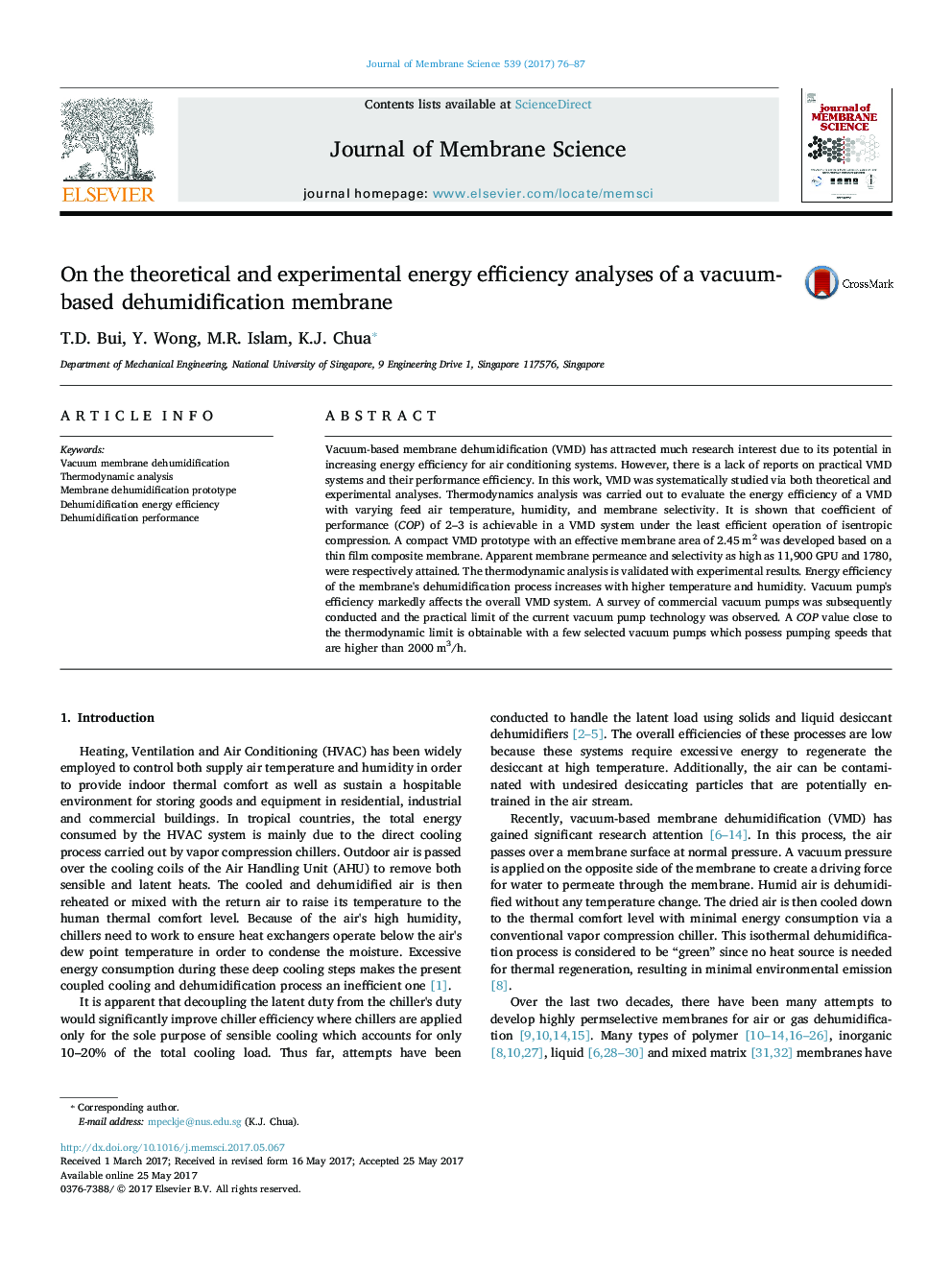| Article ID | Journal | Published Year | Pages | File Type |
|---|---|---|---|---|
| 4988766 | Journal of Membrane Science | 2017 | 12 Pages |
Abstract
Vacuum-based membrane dehumidification (VMD) has attracted much research interest due to its potential in increasing energy efficiency for air conditioning systems. However, there is a lack of reports on practical VMD systems and their performance efficiency. In this work, VMD was systematically studied via both theoretical and experimental analyses. Thermodynamics analysis was carried out to evaluate the energy efficiency of a VMD with varying feed air temperature, humidity, and membrane selectivity. It is shown that coefficient of performance (COP) of 2-3 is achievable in a VMD system under the least efficient operation of isentropic compression. A compact VMD prototype with an effective membrane area of 2.45Â m2 was developed based on a thin film composite membrane. Apparent membrane permeance and selectivity as high as 11,900 GPU and 1780, were respectively attained. The thermodynamic analysis is validated with experimental results. Energy efficiency of the membrane's dehumidification process increases with higher temperature and humidity. Vacuum pump's efficiency markedly affects the overall VMD system. A survey of commercial vacuum pumps was subsequently conducted and the practical limit of the current vacuum pump technology was observed. A COP value close to the thermodynamic limit is obtainable with a few selected vacuum pumps which possess pumping speeds that are higher than 2000Â m3/h.
Related Topics
Physical Sciences and Engineering
Chemical Engineering
Filtration and Separation
Authors
T.D. Bui, Y. Wong, M.R. Islam, K.J. Chua,
